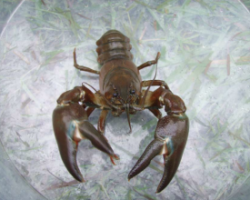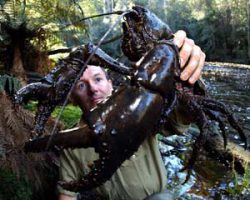Published Articles
What you said about Open Education Resources
Dr Eva Sharpe, HE Policy Officer at the Society of Biology, reports on the results of our survey into the use of Open Education Resources Earlier this summer, I blogged about a Society of Biology project to promote the use of Open Education Resources (OER) by the bioscience community. As one strand of the project we’ve been collecting existing bioscience resources which we’ll be promoting through a new website launching this autumn. Over the summer we surveyed HE bioscience teachers on their current use of OER, any barriers they have found, and comments on our plans for the new website. Here I summarise the responses. Only half of our respondents were currently using or creating OER. Those that weren’t using OER gave a mixture of reasons, from only teaching postgraduate courses and therefore needing very specific teaching resources, having excellent “in house” content available, and a pool…

An American crayfish in London (and beyond!)
by Zara Gladman, PhD student at the University of Glasgow and intern at the Society of Biology In my last blog I waxed lyrical on the wonders of crayfish, those large freshwater invertebrates that grace our rivers, lochs and your M&S sandwiches. Today I’d like to discuss one of the biggest threats to aquatic biodiversity: the introduction of non-native crayfish to new ecosystems. For the past four years, my life has been devoted to learning everything I can about one such invader, the North American signal crayfish (Pacifastacus leniusculus, pictured right). Originally from western North America, this species was imported into Sweden for aquaculture in the 1950s and 60s. Thereafter, introductions were made to several other countries including the UK. Today, the signal crayfish is the most widespread non-native crayfish species in Europe. This is not good news for our native plants and animals. Signal crayfish are large, mobile “keystone…

Species of the week: the crayfish
My name is Zara and I’m an “astacologist”, which is a fancy way of saying that I study crayfish, lobster-like freshwater crustaceans of which there are more than 640 described species. In Australia, they go by the name of “yabby” (as in “Yabby Creek” – Home and Away fans will understand). In the American South, they’re called “crawfish” (Elvis Presley sang a rather catchy song about them in the film King Creole). In other parts of the world, they’re known as “crawdads” or “mudbugs”. Crayfish are a fantastically diverse group, ranging in size from the tiny (2.5 cm) swamp crayfish (Tenuibranchiurus glypticus) of Australia to the giant Tasmanian crayfish (Astacopsis gouldi), which grows to over 80 cm and can weigh a whopping 5 kilograms! Crayfish are also diverse in their choice of habitat, surviving in rivers, lakes and even caves. And they’re not fussy eaters either,…
A personal thought on photography, art, biology and science
A guest blog from Dr Wei-Feng Xue, winner of last year’s photography competition “What inspired you to be a biologist?”. Wei-Feng is a Lecturer in Chemical Biology at the University of Kent and uses his flikr photostream to communicate photography. People often ask me, as a child what did I want to do when I grew up. “Have you always wanted to be a bio-scientist?” they ask. Perhaps it surprises some when my answer is “no”! As much as I wanted to become a scientist, I was also equally excited about becoming a visual artist or a designer. I spent a lot of time on painting, crafting, drawing, photographing and designing, but science eventually won the career path “tug-of-war”. In a blink of an eye it feels, I had my degree in science, completed a postdoc in a biosciences lab, and more recently started an academic position in a…
Voice of the Future 2012
Earlier this month 120 young people masqueraded as members of the House of Commons Science and Technology committee. We were given the unique opportunity to quiz a stellar (in Parliamentary terms) line up on the future of science in Britain. The signs that we were being taken seriously were good; on a day when his other duties included presiding over Prime Ministers Questions, the speaker of the House of Commons, John Bercow, gave an enthusiastic introduction. The first witnesses before the committee were science and universities minister David Willetts and one of the new departmental chief scientific advisors, Prof John Perkins. It was brave of David Willetts to defend NHS homeopathic remedies in front of such a potentially partisan crowd. However his justification, that homeopaths can vote, is one that any politician is sure to understand. It was also gratifying to hear the minister responsible for science…
